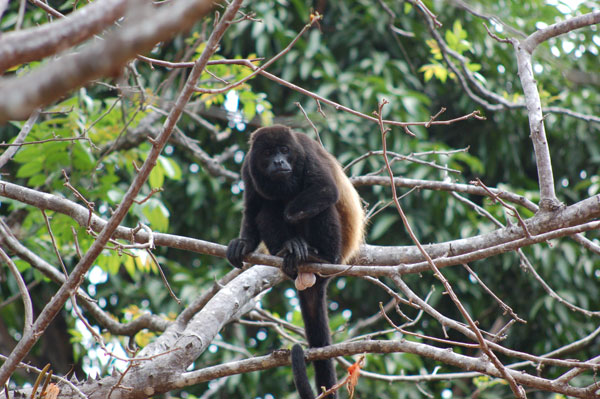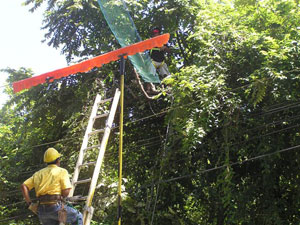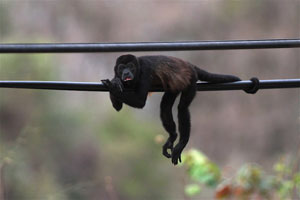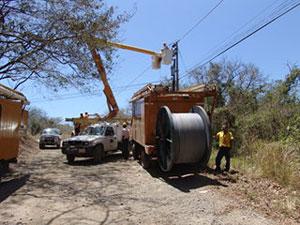
The Guiones area is seeing a remarkable decline in monkey deaths from high wire electrocutions. Brenda Bombard, founder and director of the Nosara Animal Refuge, credits ICE, Costa Rica’s government-owned utility company, with saving animal lives by systematically insulating the electric lines in the Guiones area.
 |
|
“They [ICE] started on February 12th, 2010, insulating the wires as they had said they would,” says Bombard. “Since then they have finished all the American project, from K-section to the river mouth below Lagarta Lodge, they’re all insulated wires now.”
For comparison, in 2009, Bombard’s organization documented 132 monkey deaths with 90% of those blamed on electrocutions (the rest were dogs attacks and vehicle deaths). In 2010, there were 42 documented deaths. As ICE continued to install the insulated wires more progress was reflected. So far this year only five monkey deaths have been recorded in the Guiones area. ICE has replaced more than 17 miles of electric line with insulated material.
The remaining deaths are largely blamed on the powerful electrical transformers and ICE is just beginning to install insulated covers, called boots, over those.
Detailed record keeping by Bombard and Vicki Coan, founder of Sibu Sanctuary, where rescued monkeys are introduced back into the wild, have been the catalyst for ICE’s efforts. In fact, according to Bombard, ICE will be using the statistics as a basis for continuing their work into other parts of the country.
Monkey deaths as a result of uninsulated electric wires and transformers has been an on-going issue in the face of fast-paced construction and, hence, habitat destruction across Costa Rica. Some informed sources say enacting a law that requires insulated electric lines for all new housing would stem the continuing decimation of the country’s monkey populations. |
| |
|
 |
|
| |
|
 |
|
However, according to Bombard, the added expense of insulated electric lines is out of hand for many of Costa Rica’s impoverished and would be a huge impediment to such a law.
“If they would change the law and make those who can pay, pay, you could draw a line on the income or the value of the property.” Then, she says, those under a certain income could be subsidized for installing insulated electric wire.
However, Bombard, who moved from the U.S. to Costa Rica in 1998, adds, “I think changing the laws needs to come from the local people. Even though I’m here legally, I’m still a guest in this country."
| 
